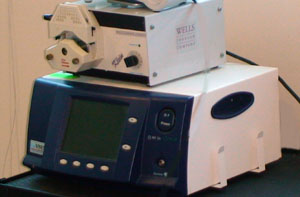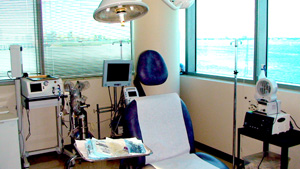Endovenous Vein Closure
Endovenous Reflux Disease and Endovenous VNUS Radio Frequency Vein Closure
 Venous Reflux Disease is one of the most common in the United States with more than 25,000,000 people afflicted by it. The symptoms of the disease include varicose veins, swelling, and discoloration on the leg as well as ulcers. Prior to Endovenous Closure, mild forms of the disease were treated by life-long use of pressure stalkings while more severe forms required Vein Stripping. The Vein Stripping procedure is quite invasive requiring general anesthesia, several days of hospitalization and quite a bit of down time.
Venous Reflux Disease is one of the most common in the United States with more than 25,000,000 people afflicted by it. The symptoms of the disease include varicose veins, swelling, and discoloration on the leg as well as ulcers. Prior to Endovenous Closure, mild forms of the disease were treated by life-long use of pressure stalkings while more severe forms required Vein Stripping. The Vein Stripping procedure is quite invasive requiring general anesthesia, several days of hospitalization and quite a bit of down time.
Endovenous Closure has made treatment of VRD much more effective (97%) and has decreased the down time and morbidity significantly. It is accomplished by introducing a catheter into the diseased vein under ultrasonic guidance through an incision no bigger than a needle stick. The Catheter then shoots out radiofrequency waves which heat up the Collagen in the vein walls which causes the vein to collapse. Blood is then re-routed to previously unused veins which hopefully have healthy valves.
Endovenous Closure is done completely under local anesthesia and the patient can return to all physical activity within one week. For the week immediately after the procedure, the patient can ambulate and bathe normally but cannot exercise heavily. Post operative pain is present in less than 1 % of patients.

Side effects are extremely rare but include: infection, vein perforation, deep vein thrombosis, pulmonary embolism, and numbness. Deep vein thrombosis is the most severe of the potential complications and can be avoided by doing immediate post-op ultrasound as well as ultrasound at 72 hours post-op. If a DVT is found in either of these two ultrasound, immediate anti coagulation therapy dissolves the clot quickly preventing a pulmonary embolism nearly 100% of the time. Numbness is gone by 6 months post op nearly a 100% of the time.
Healthy veins have valves, which open and close to assist blood flow. Over time, these valves can become damaged or diseased, causing the unsightly bluish blotches known as varicose veins. Some people develop varicose veins due to genetics or hormone changes like those associated with pregnancy. For others, varicose veins are simply a natural part of the aging process.
Local anesthesia is administered to numb the area being treated. Unlike traditional plastic surgery, patients who have undergone Endovenous Closure usually resume normal activity in 1-2 days.



